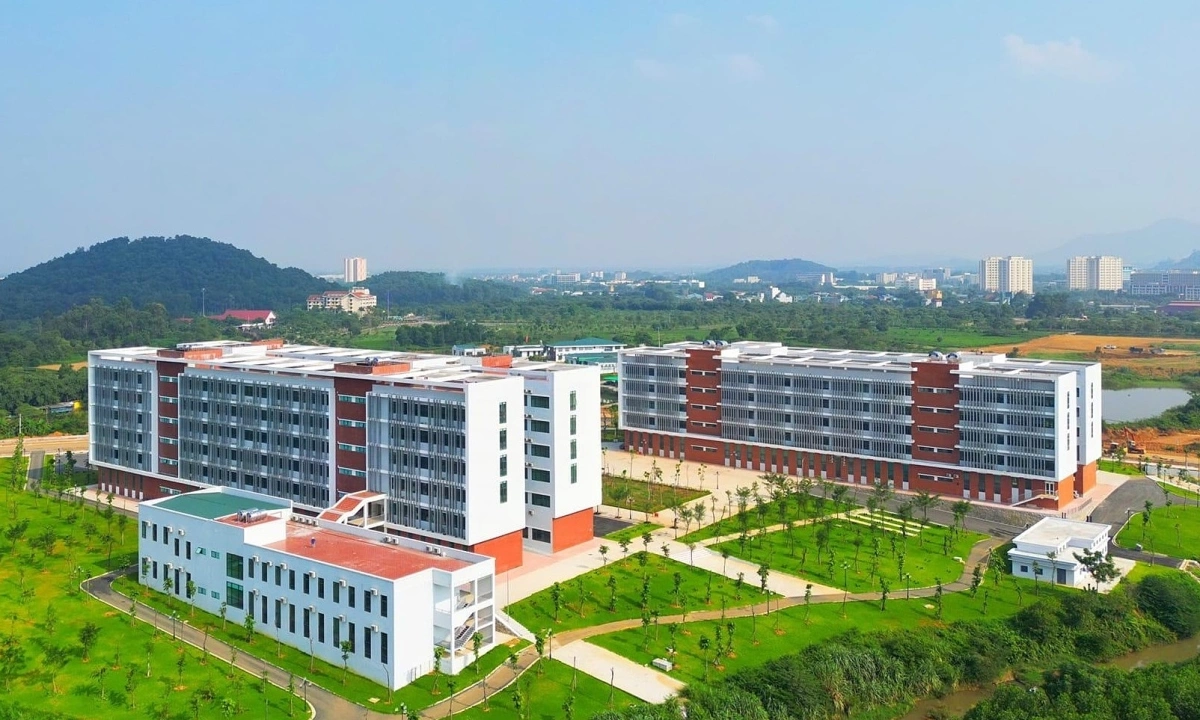This content is included in the announcement concluding the meeting of the Central Steering Committee on Science, Technology Development, Innovation and Digital Transformation, on September 30.
Four institutions, including Hanoi National University, Ho Chi Minh City University, Danang University and Hanoi University of Technology, will receive key investments from now until 2030. Some specific goals are to strive to be in the top 150 universities in Asia and have at least one field in the top 100 in the world according to prestigious rankings.
Currently, according to QS - one of the two most popular and largest university rankings in the world, Hanoi National University and Ho Chi Minh City are ranked 161st and 184th in Asia, respectively, Hanoi University of Technology is ranked 388th, and Danang University is in the 421-430 group. In terms of field, no Vietnamese school is in the top 100 in the world.
Hanoi National University at Hoa Lac – a multifunctional, smart, modern and sustainably developed integrated university urban area
In addition, each university needs to create 50 innovative startups, science and technology enterprises every year.
In the 2026-2030 period, each school will attract at least 50 million USD in investment for scientific research, technology development and innovation; 10 successful start-ups will be valued at 200 million USD or more.
Schools must also ensure that at least 60% of training programs in science, engineering, and technology are taught in English, with priority given to training in joint degrees with universities in the world's top 200. At the same time, the proportion of subjects with practice or learning through project experience and research accounts for 50% of the program, and it is mandatory to have an internship at a business for students.
The four schools must have at least 30% graduate students, of which about 40% are doctoral students.
Finally, the proportion of the budget for funding research and technology transfer (including sources from innovation activities) in the revenue structure must reach at least 35%.
Some experts believe that it will be difficult for schools to meet this criterion. Among 13 universities with revenue of thousands of billions of VND, only Ho Chi Minh City University of Economics has a revenue ratio from science and technology accounting for 27.6%, the rest from 11% or less, most of which are insignificant.
In the immediate future, in the 2026-2027 academic year, Hanoi National University and Ho Chi Minh City, Hanoi University of Science and Technology, and Da Nang need to waive tuition fees for all graduate students and provide scholarships for this group through a mechanism of paying teaching assistants and research assistants. In the training program, graduate students must go on exchange at the world's leading research institutes and universities for at least 10 months.
Schools must also ensure facilities for practice and experiments. At the same time, universities must develop a mechanism for lecturers to work for a year in laboratories, research and development centers of leading enterprises or research institutes and prestigious universities in the world after 5-7 years of work.
In November, the four schools need to have action plans to achieve their ranking goals, urgently propose investment projects in science and technology infrastructure, focusing on strategic technology industries.
The Ministry of Education and Training, the Ministry of Science and Technology, the Ministry of Finance, the Ministry of Public Security, state-owned enterprises, and the cities of Hanoi, Da Nang, and Ho Chi Minh City all have the task of promoting the above goal, thereby promoting the 3-House cooperation model and the startup and innovation ecosystem.
VNExpress Newspaper:Four universities receive key investment to enter Asia's top 150